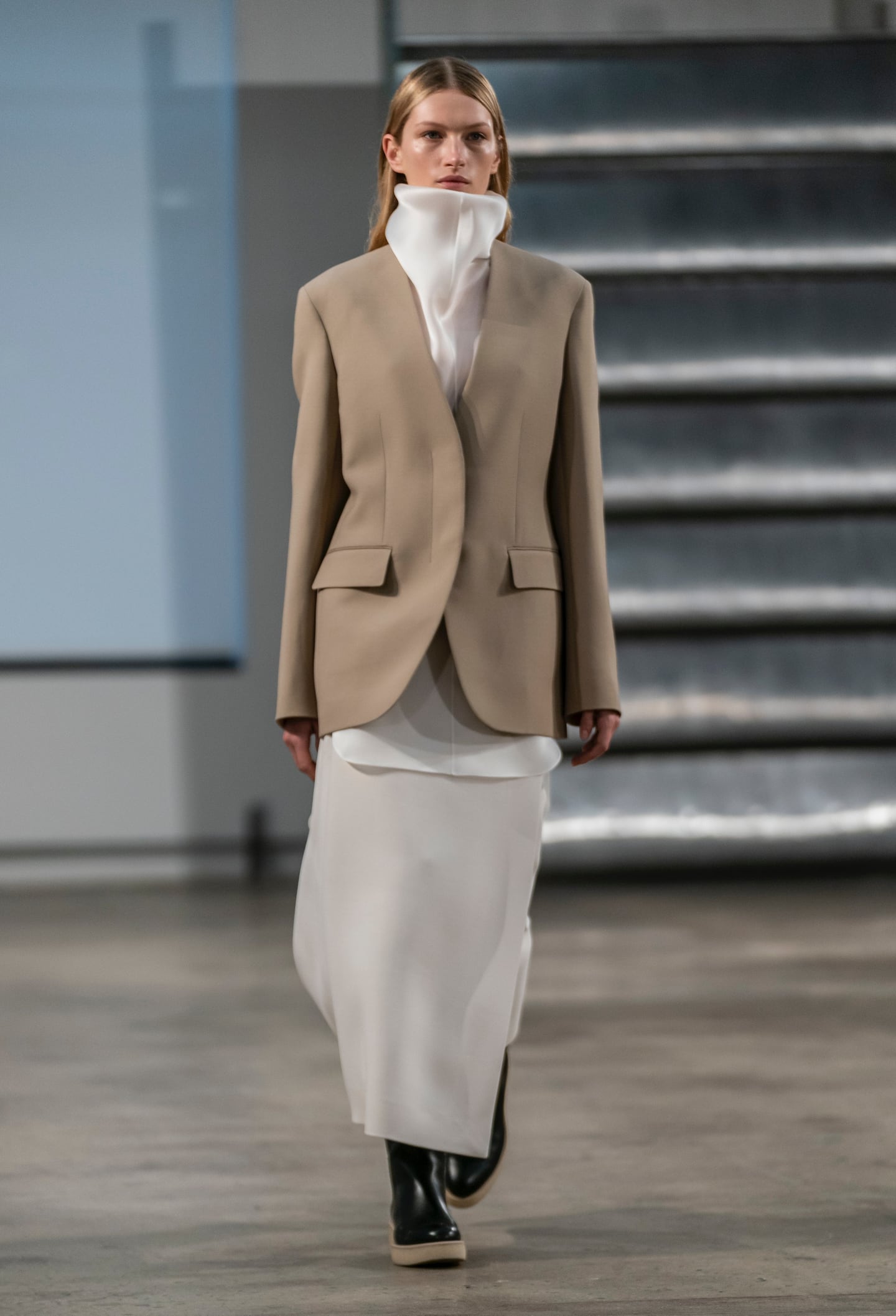
The Business of Fashion
Agenda-setting intelligence, analysis and advice for the global fashion community.

Agenda-setting intelligence, analysis and advice for the global fashion community.

NEW YORK, United States — The Row is an extravagance only a privileged few can enjoy. Designers Ashley and Mary Kate Olsen's blazer linings are often more expensive than what many designers would use to create the actual garment. And yet, there is something paradoxically economical about their approach. Consider their presentations, which always begin within 15 minutes of the established start time, and their runways, which are filled with ideas but never too many.
They are incredibly precise, which is why fall’s nod to surgical scrubs, whether intentional or not, was so appropriate. Models were outfitted in heavy, wellie-like boots and sheer white organza slippers, some embroidered, some not, reminiscent of polypropylene foot covers. Any flourishes — like the sparkly topcoat for evening, or the clusters of circular, matte spangles scattered over a skirt — felt intentional rather than whimsical.
Wide, high necks, sculpted into amoebas, covered the face like a mask. Worn with collarless blazers and coats, layered over wide-leg trousers and elongated shirting, they were the collection’s foundation, but also its most irresistible element. An extravagance, to be sure, but also evidence of The Row’s staying power, and the talent of its designers to create pieces worthy of such status.
From where aspirational customers are spending to Kering’s challenges and Richemont’s fashion revival, BoF’s editor-in-chief shares key takeaways from conversations with industry insiders in London, Milan and Paris.
BoF editor-at-large Tim Blanks and Imran Amed, BoF founder and editor-in-chief, look back at the key moments of fashion month, from Seán McGirr’s debut at Alexander McQueen to Chemena Kamali’s first collection for Chloé.
Anthony Vaccarello staged a surprise show to launch a collection of gorgeously languid men’s tailoring, writes Tim Blanks.
BoF’s editors pick the best shows of the Autumn/Winter 2024 season.